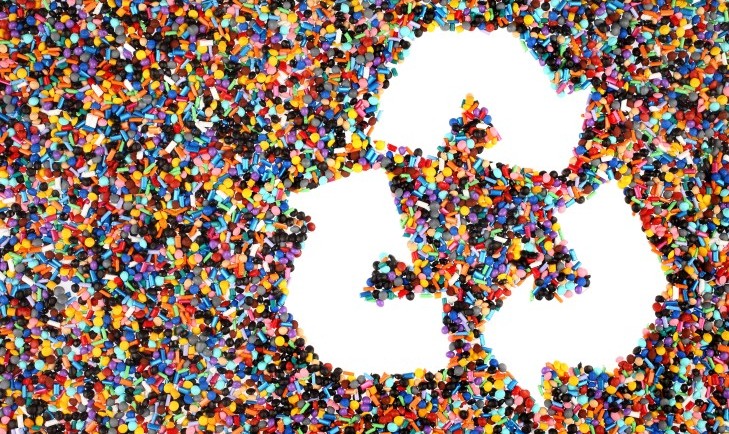
The Western Governors' Association keeps you updated on the latest news in the West. Here are the top stories for the week starting July 24, 2023. (Photos courtesy of Samuel Wilson / Bozeman Daily Chronicle).
According to the United Nations Environment Programme, about 430 million tons of plastics are produced each year, a number that is set to triple by 2060. Much of the polymer produced goes into short-lived or single-use products, which contributes to junk that ends up in oceans, fertile soil, animals’ guts, and even potable water supplies, representing a major risk to both humans and nature.
The global market for recycled plastics was valued at USD 48 Billion in 2022, and it is projected to reach USD 74.46 Billion by 2032. This growth is primarily driven by the growing awareness among the public and governments regarding the detrimental impact of plastic waste on the environment.
In honor of Plastic Free July this week’s Best of the West will examine how Western states are working to improve plastics recycling.
According to a new United Nations analysis, recycling plastic waste can slash contamination by 20 percent, while the careful use of alternative materials will take care of a further 17 percent of the problem. Combined with proper disposal of the remaining waste, by 2040, the world could avoid up to 80 percent of the harms of mismanaging plastic, including extra carbon emissions, exposure to toxins, and ocean degradation.
Chemists at the University of Colorado Boulder have developed a new way to recycle plastics found in soda bottles and other packaging. The team’s method relies on electricity and some nifty chemical reactions to disintegrate polyethylene terephthalate (PET), which can stick around in garbage piles for centuries, in a matter of hours or days.
The Municipality of Anchorage Solid Waste Services has been hosting local tour groups to get a first-hand look at the transformation of post-consumer plastics and small North Slope thread protectors (used in the shipment of well pipes) into plastic lumber. While the lumber can’t be used for structural applications — the lumber is much more flexible than traditional wood lumber — the lumber can be used to build picnic tables, fences, garden boxes, benches, and other items.
In a new white paper commissioned by the National Academies of Sciences, Engineering, and Medicine, engineers from Stanford University examine case studies for using plastic waste to build façade panels at the San Francisco Museum of Modern Art and pavement in a California Department of Transportation road project. Among other results, their findings indicate that recycled glass fiber reinforced polymer composite – a tensile plastic commonly used in car, boat, and plane parts – is a promising material for reuse in buildings.
Researchers at the Lawrence Berkley National Laboratory in California successfully engineered microbes to make biological alternatives for the starting ingredients of an infinitely recyclable plastic known as poly(diketoenamine), or PDK.
 Keeping Tahoe Blue: The University of California Davis Tahoe Environmental Research Center recently found that an invasive predatory shrimp known as Mysis are almost gone from Lake Tahoe. In their place are helpful creatures who are safely returning to eat algae and other fine particles. Scientists say this mysterious shift may be restoring the lake's legendary clarity. Lake Tahoe's average visibility has increased from 52.8 feet deep to 71.7 feet in the past three years. In the last five months of 2022, prior to this year’s spring runoff, the visibility increased to 80.6 feet, a level not seen since 1988.
Keeping Tahoe Blue: The University of California Davis Tahoe Environmental Research Center recently found that an invasive predatory shrimp known as Mysis are almost gone from Lake Tahoe. In their place are helpful creatures who are safely returning to eat algae and other fine particles. Scientists say this mysterious shift may be restoring the lake's legendary clarity. Lake Tahoe's average visibility has increased from 52.8 feet deep to 71.7 feet in the past three years. In the last five months of 2022, prior to this year’s spring runoff, the visibility increased to 80.6 feet, a level not seen since 1988.
From Coal to Critical Minerals: The Department of Energy is offering $32 million in funding for the production of rare earth and critical minerals from coal-based sources. Funding will be used for front-end engineering and design studies to support the development of intermediate- and demonstration-scale facilities for domestic production and refining of rare earth elements and other critical minerals.
A North American Charging Network: General Motors, BMW, Honda, Hyundai, Kia, Mercedes, and Stellantis are joining forces to build a North American electric vehicle charging network that would nearly double the number of fast-charging plugs in the U.S. and Canada. The seven auto manufacturing giants will share in a multibillion-dollar investment to build “high power” charging stations with 30,000 plugs in urban areas and along travel corridors.
Rural Health Care Access: A southern Arizona hospital was awarded a federal grant of just under $10 million to expand rural health care access. Copper Queen Community Hospital in Bisbee will use the funding on a 27,000-square-foot expansion project. The addition will house operating rooms, pre- and post-operative areas, a sterile processing area, and a new unit for inpatient beds.
 Rebuilding Indigenous Food Systems: Montana State’s Buffalo Nations Food System Initiative was awarded $2.15 million this summer, as part of a larger grant from the U.S. Department of Agriculture to rebuild Native food sovereignty and recover Indigenous ways of growing.
Rebuilding Indigenous Food Systems: Montana State’s Buffalo Nations Food System Initiative was awarded $2.15 million this summer, as part of a larger grant from the U.S. Department of Agriculture to rebuild Native food sovereignty and recover Indigenous ways of growing.